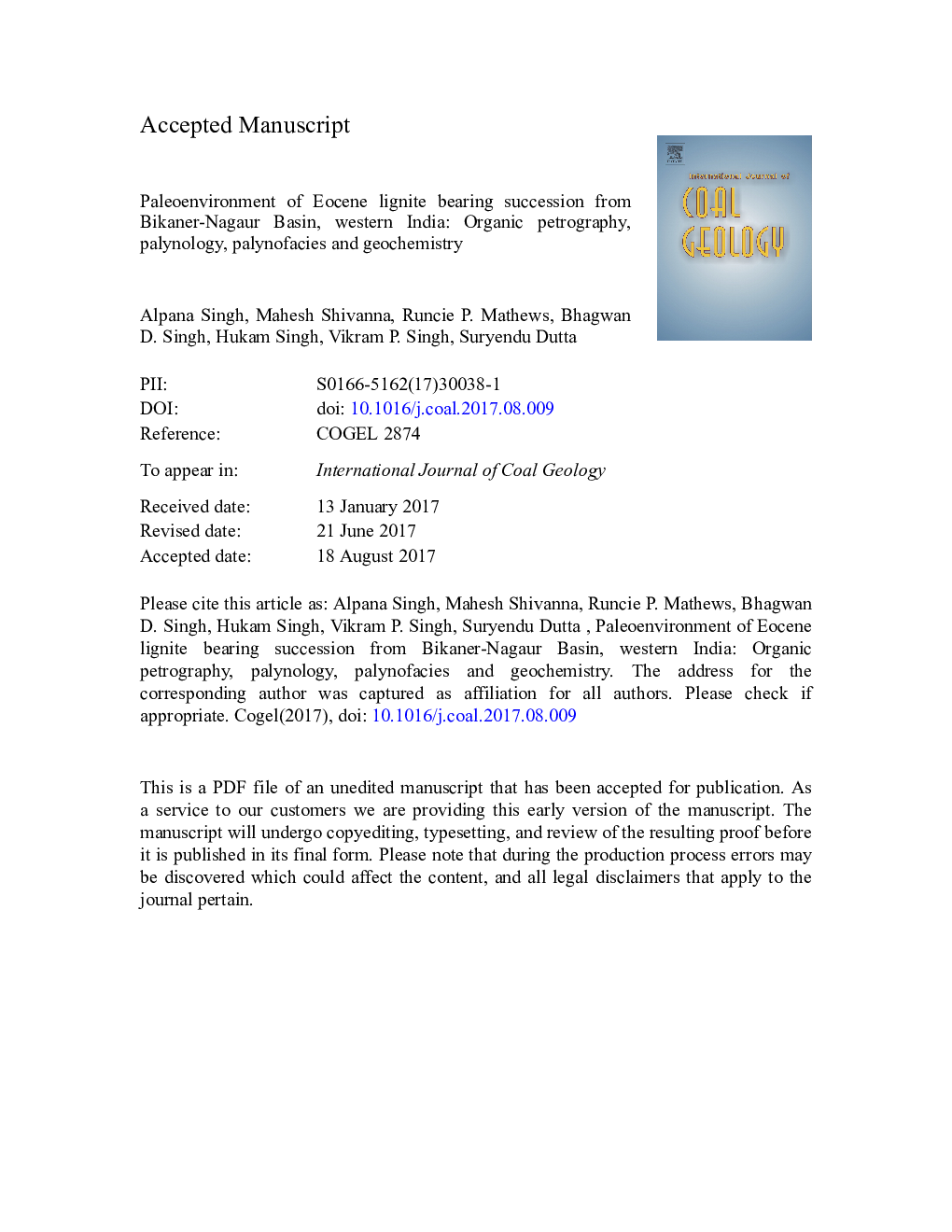| کد مقاله | کد نشریه | سال انتشار | مقاله انگلیسی | نسخه تمام متن |
|---|---|---|---|---|
| 5483573 | 1522522 | 2017 | 61 صفحه PDF | دانلود رایگان |
عنوان انگلیسی مقاله ISI
Paleoenvironment of Eocene lignite bearing succession from Bikaner-Nagaur Basin, western India: Organic petrography, palynology, palynofacies and geochemistry
دانلود مقاله + سفارش ترجمه
دانلود مقاله ISI انگلیسی
رایگان برای ایرانیان
کلمات کلیدی
موضوعات مرتبط
مهندسی و علوم پایه
علوم زمین و سیارات
زمین شناسی اقتصادی
پیش نمایش صفحه اول مقاله

چکیده انگلیسی
Lignite and associated shale samples from the Matasukh mine of western India have been studied by petrographic, palynofacies, palynological and organic geochemical parameters. The objective is to understand the floral (organic) composition, and palaeo depositional conditions (ecology and climate) of the lignite-bearing sequence. Petrographically, the low rank B lignites are dominantly composed of huminite macerals, followed by moderate liptinite and low inertinite macerals. The predominance of detrohuminite (attrinite + densinite) with respect to telohuminite (textinite + ulminite) suggests that the woody vegetation has undergone higher degree of degradation during the peat accumulation, as is also indicated by the frequent occurrence of funginite. The TPI, GI, GWI and VI indices point towards limno-telmatic condition of the palaeomire during the deposition of lignite-forming peat under mesotrophic to rheotrophic basin conditions. The reducing conditions in the depositional site are evident from the frequent pyrite content. The studied samples had a high organic matter yield, which showed a co-dominance of phytoclasts and AOM. This nexus is indicative of a marginal marine depositional environment, also evident from Tyson's APP diagram. The palynofloral assemblage is dominated by angiosperm pollen, especially those having affinity with the family Arecaceae. The presence of palynomorphs of the family Dipterocarpaceae indicates the existence of rain-forest vegetation in the vicinity of the depositional site. The degradation products of oleanane and 23-norlupane in the sediment extracts also suggest that the angiosperm dominant higher plants served as the source for the peat-forming biomass. The presence of hopanes indicates high microbial activity during the formation of lignites. The high CPI and TAR values also indicate the large input of terrigenous higher plant materials.
ناشر
Database: Elsevier - ScienceDirect (ساینس دایرکت)
Journal: International Journal of Coal Geology - Volume 181, 1 August 2017, Pages 87-102
Journal: International Journal of Coal Geology - Volume 181, 1 August 2017, Pages 87-102
نویسندگان
Alpana Singh, Mahesh Shivanna, Runcie P. Mathews, Bhagwan D. Singh, Hukam Singh, Vikram P. Singh, Suryendu Dutta,